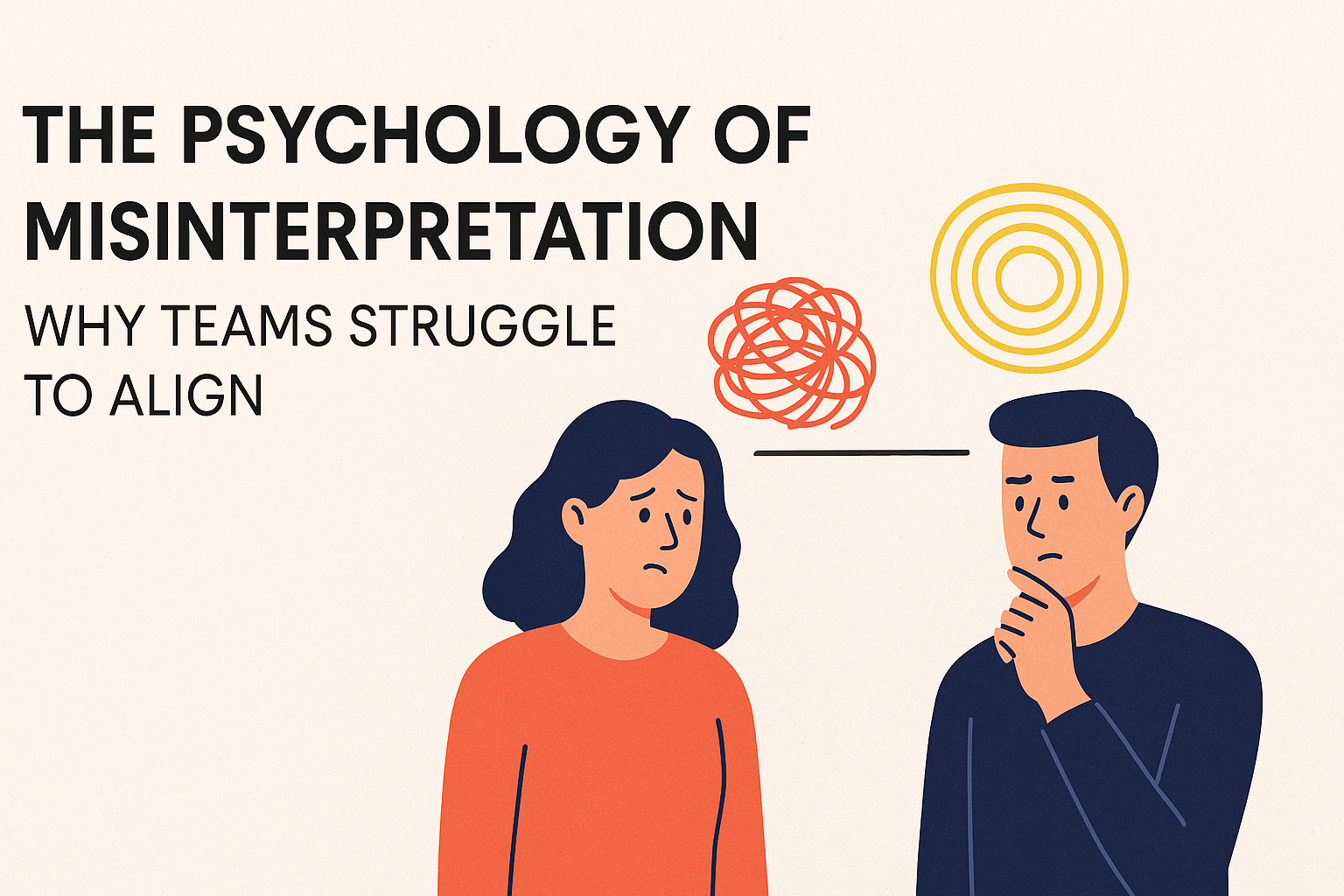
Ever walked out of a meeting thinking, “That went well,” only to find out later that three different people took three different actions—none of them what you intended? Welcome to the fascinating (and frustrating) world of misinterpretation.
In most teams, the biggest communication problem isn’t that people aren’t talking—it’s that everyone is interpreting the same words differently. Why? Because every message passes through layers of cognitive biases, personal experiences, and emotional filters before it lands. And by the time it does? It’s barely recognizable.
Let’s break down the psychological forces at play and how teams can bridge these gaps before a simple update turns into a full-blown project derailment.
Psychological Factors Behind Misinterpretation
1. Confirmation Bias: Hearing What You Want to Hear
Let’s start with the crowd favorite—confirmation bias. It’s that charming human tendency to seek out information that supports what we already believe while ignoring everything else.
Example: You announce in a meeting, “We’re exploring restructuring.” Half the room hears “We’re getting laid off.” The other half hears “I might finally get that promotion.” Same sentence. Two completely different realities.
The Impact:
Decisions get made based on assumptions, not facts.
Team members “selectively hear” what suits them, leading to misalignment.
The Fix: Encourage teams to repeat back key takeaways in their own words. You’d be amazed how often you’ll hear, “Wait, that’s not what I meant.”

2. Lack of Contextual Understanding: Missing the Bigger Picture
We’ve all heard someone say, “That’s not what I meant”—and nine times out of ten, it’s because the listener lacked context.
📌 Example: A manager says, “We need this done ASAP.” Operations panics and works overtime. Marketing thinks “ASAP” means next week.
The Impact:
People operate from different assumptions about urgency, priorities, or expectations.
Projects stall or go off track because teams aren’t aligned on the bigger picture.
The Fix: Train teams to ask clarifying questions like, “When exactly do you need this by?” and “What’s driving the urgency?” Adding context removes guesswork.

3. Emotional Responses Affecting Perception: Feelings Over Facts
Let’s not forget the emotional rollercoaster we all bring to work. Stress, excitement, fear—they all influence how we hear (and interpret) messages.
Example: If a team member is already stressed, even a simple “Can we talk?” triggers “I’m in trouble” mode. Meanwhile, the manager just wanted input on lunch spots.
The Impact:
Emotional states warp neutral messages into personal attacks or crises.
Misinterpretation leads to defensiveness, conflict, and disengagement.
The Fix: Promote emotional check-ins and foster psychological safety so people feel comfortable seeking clarification without jumping to conclusions.
How Together Telling Helps Minimize Misinterpretation
At Together Telling, we understand that words are just half the battle. How they’re received is where the real challenge begins.
1. Training Teams to Recognize and Reduce Bias in Communication
We don’t just tell teams to “communicate better.” We:
Teach them how cognitive biases work—and how to spot them in real time.
Run interactive workshops where teams practice reframing conversations.
Use real-world scenarios to show how bias derails projects (and how to fix it).
Result: Teams who stop jumping to conclusions and start asking better questions.
2. Encouraging the Use of Neutral Language in Workplace Discussions
Words matter. Phrases like “We might have to let people go” or “This project’s a disaster” create panic. Instead, we coach teams to:
Use neutral, precise language to avoid emotional triggers.
Replace vague deadlines like “ASAP” with specifics like “by Friday 3 PM.”
Frame feedback in ways that invite dialogue, not defensiveness.
Result: Conversations that stay productive, clear, and aligned.

Final Thoughts: Interpretation Is Everything
Communication isn’t just about what you say—it’s about what they hear, feel, and do next. The human brain is a complicated filter, and until teams recognize that, they’ll keep talking past each other.
The good news? With the right tools and training, you can minimize misinterpretation, reduce friction, and make collaboration smoother (and less exhausting).
Backlink Source:
Psychology Today: Why People Misinterpret Messages

